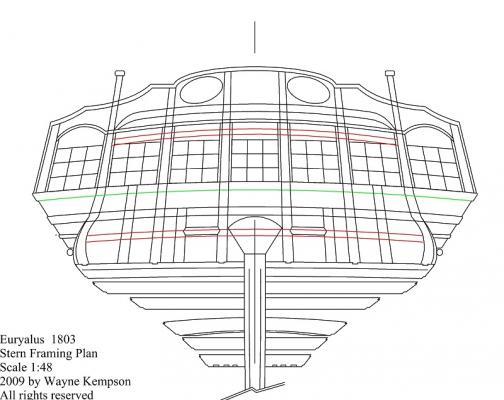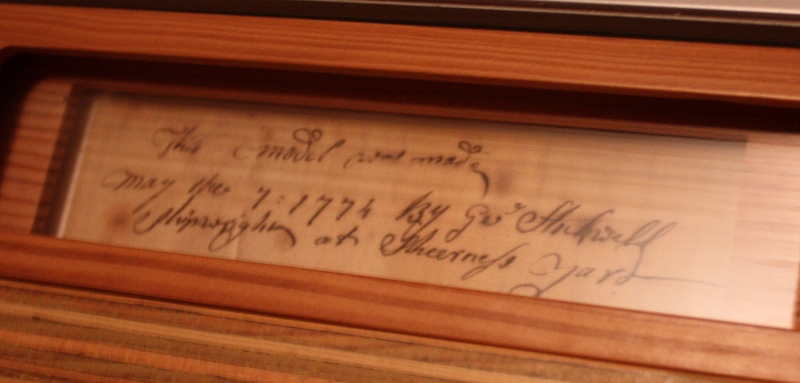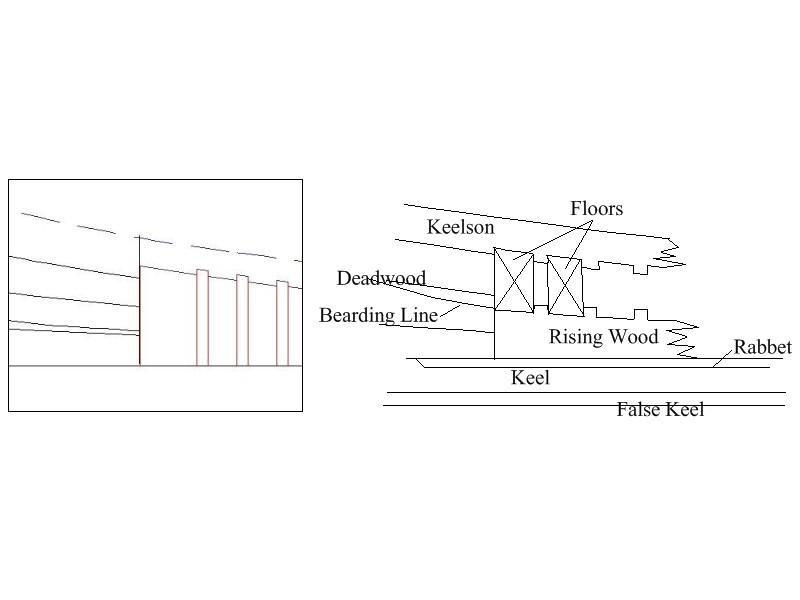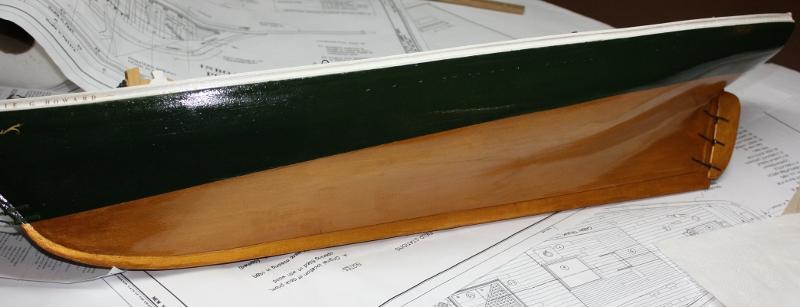-
Posts
8,097 -
Joined
-
Last visited
Content Type
Profiles
Forums
Gallery
Events
Everything posted by allanyed
-
Dan, Many years ago a friend and I made a set of glass and gel coat molds used to make a couple fiberglass models of Islander 30 sail boats. To get scale non-skid surface areas I masked of the area that was not to be textured. The uncovered area then received a thin coat of resin. Last I used an old fashioned dust sprayer (remember the scene in the Godfather One where Don Corleone is spraying tomato plants with his grand son) and sprayed glass micro beads which actually looked and flowed like a powder. The texture was perfect and of course glass lasts and can take a paint over it as well. Allan
-
Dan Sweet!!! Metal work can make or break the appearance of any model in my opinion. Your metal work is looking oh so nice! Any detailed photos on the how you are doing everything and anything will be most welcome. Allan
-

HMS Euryalus by egen -
allanyed replied to egen's topic in - Build logs for subjects built 1801 - 1850
Egen, Number 1 is the correct location The drawing attached shows the line in red. You can also see this in the plans in the inboard profile. Allan -

HMS Euryalus by egen -
allanyed replied to egen's topic in - Build logs for subjects built 1801 - 1850
Rob and Egen, In almost all cases where there was inconsistency between Steel, the Astrea/Curacoa contract and the drawings, the drawings were the default that I used. There were dozens, perhaps hundreds, of items where there were inconsistencies. It was a happy day when two out of three of the sources matched. I will look at the model and drawings to see if I can remember how I came to the conclusion I did reach on making the part itself. Allan -
Rob, I cannot tell you how much fun it is to watch your build, along with Egen and anyone doing Euryalus or other ships in the class. Careful with the stern timbers. I waited until much later to set them in place as I was worried about knocking them off before before they were fully framed and the counter planking completed. Great job, and thanks again for sharing Allan
-
Hi Dan Very happy to see your log. Thanks for sharing details on how you are doing the various steps and please do keep them coming. She looks terrific. Allan
-
Dan, I agree with your use of wood as a substitute for metal for the bearings. I have used English boxwood for such small parts and painted it a grimy black. So far no one seems to have noticed they are not metal. Allan
-
Tony The following are the scantlings for a 16 foot cutter found in W.E. May''s book which were taken from Steel, so we are talking about 1800 +/- Floors Sided 1 1/4" Moulded at the head 1 1/8" Moulded at the throat 2" Futtocks Sided at the heels 1 1/8" Sided at the heads 7/8" Moulded at the heads 7/8" Scarph of the timbers: 1'7" Hope this helps you Allan
-
Clay, Further to your note on having a copy of the original drafts there are often quite a few notes and sketches with references, dates, etc. as you have no doubt found. Wayne incorporated them as much as possible on the Euryalus drawings. One of the copies of the orginal drawings that we had, a cross section, shows changes made to some of the later vessels in the class and signed by Seppings. With NMM now electronically sending, the colors do indeed give further information and make it easier to interpret some of the lines. Wish they did not charge an arm and a leg for such a scan and send. I would have thought it would be less expensive than the paper copies but I guess not. Your build is looking really great and a joy to follow. Allan
-
Gary, Long before Model Ship World was started, I have been following your built for a long long time and it has been a treat. Thanks for sharing during so many of the steps along the way. Allan
-

HMS Euryalus by egen -
allanyed replied to egen's topic in - Build logs for subjects built 1801 - 1850
Egen I had my doubts that your idea would work, but am now a believer that there is always something new to consider or actually try. Allan -
sport29652 The appearance of the woodwork looks very nice. Regarding your request for feedack on the cannon rigging, couple suggestions, so hope you don't mind. It looks like you ran the running rigging through the eyes where there would be another block. The blocks that you do have there appear to be oversized, which may be the reason it did not look right in your earlier tries. For the blocks that you did use, the hole in the blocks through which the line passes should be towards the bulkhead. The missing blocks would have the holes opposite. The ends of the lines were more likely frapped rather than coiled on the deck. Again hope you don't mind the comments. Allan
-

Looking for tips on creating sail seams by pencil
allanyed replied to bhermann's topic in Masting, rigging and sails
Bob, For sure try the sewing. For me I find the stitches to be out of scale so went to pencil. Jay, NICE cross stiching on the bolt rope. Re: what material? I use 800 or 1200 TC linen in off-white color. The fine weave is about as close as I can get to scale with linen. Allan -

Belaying Pins
allanyed replied to allanyed's topic in Discussion for a Ship's Deck Furniture, Guns, boats and other Fittings
Guillermo Yes I did try to preweld and then file the handle shape. The heat needed for silver soldering softens the brass so it is too weak when chucked in the drill and bends as soon any pressure is applied. Allan -
Ron There is a note on making pins that would have 0.020mm smallest diameter pins in the deck furniture forum posted February 24th that may help you. I suspect I should have posted it in the rigging forum. Allan
-
The photo is of the paper written by George Stockwell who built the model of the HMS Bristol and found in the model as pointed out by Greg in an earlier post on this thread. I am not sure, but it may still be on loan to the Art Gallery of Toronto. The note says This model was made May the 7, 1774 By Geo Stockwell Shipwright at Sheerness Yard This is actually a copy of the original and put on display with the model. Allan
-

Looking for tips on creating sail seams by pencil
allanyed replied to bhermann's topic in Masting, rigging and sails
I too use a pencil to make the seams, but continually sharpen the pencil. I like to use a clutch pencil and renew the point each seam. A mechanical pencil that holds the smallest available lead (0.2mm I believe) is also good as it maintains the same width for the entire seam. Allan -
I had the good fortune to visit the New York Yacht Club a few months back. The models there are spectacular and nary a one has a copper bottom using plate. Those that are coppered are painted and looked great. For warships copper bottoms do look more realistic, but for the dozens of racing yachts, mostly America's Cup winners and challengers, I like the look of the simulated bottom cover. I tried this recently and am pleased with the look on a the yacht Thistle and now on the Fredonia fishing schooner Lettie G. Howard,( pics attached on the Lettie.) Allan
About us
Modelshipworld - Advancing Ship Modeling through Research
SSL Secured
Your security is important for us so this Website is SSL-Secured
NRG Mailing Address
Nautical Research Guild
237 South Lincoln Street
Westmont IL, 60559-1917
Model Ship World ® and the MSW logo are Registered Trademarks, and belong to the Nautical Research Guild (United States Patent and Trademark Office: No. 6,929,264 & No. 6,929,274, registered Dec. 20, 2022)
Helpful Links
About the NRG
If you enjoy building ship models that are historically accurate as well as beautiful, then The Nautical Research Guild (NRG) is just right for you.
The Guild is a non-profit educational organization whose mission is to “Advance Ship Modeling Through Research”. We provide support to our members in their efforts to raise the quality of their model ships.
The Nautical Research Guild has published our world-renowned quarterly magazine, The Nautical Research Journal, since 1955. The pages of the Journal are full of articles by accomplished ship modelers who show you how they create those exquisite details on their models, and by maritime historians who show you the correct details to build. The Journal is available in both print and digital editions. Go to the NRG web site (www.thenrg.org) to download a complimentary digital copy of the Journal. The NRG also publishes plan sets, books and compilations of back issues of the Journal and the former Ships in Scale and Model Ship Builder magazines.







